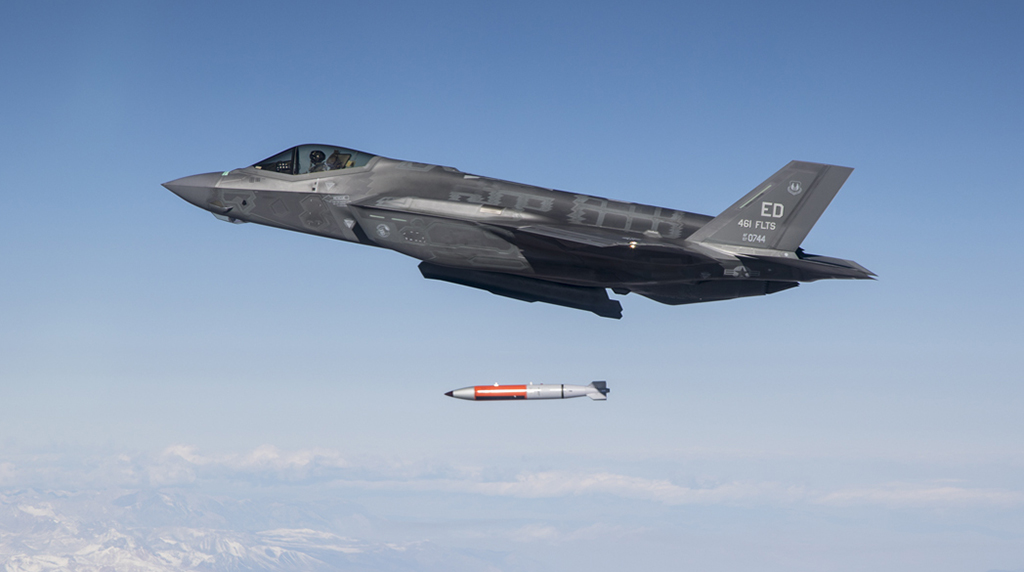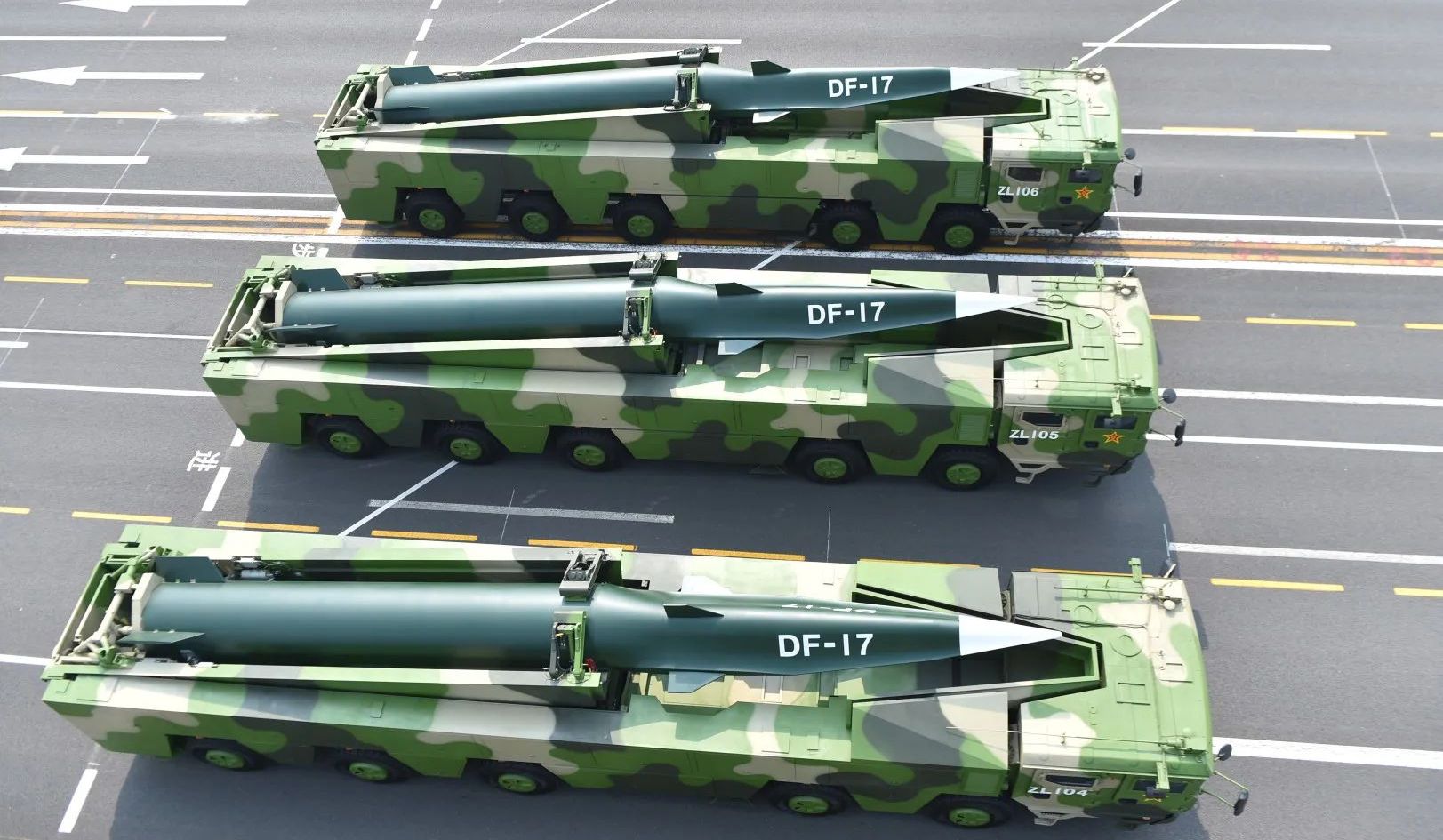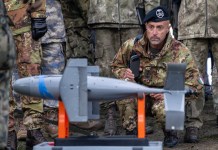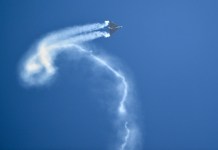Adding more teeth to its nuclear arsenal, the Biden administration has announced that the United States plans to develop a new variant of a nuclear gravity bomb, known as the B61-13, which will be based on the already-existing B61-12 design.
ON SALE! 117 MiG-31, MiG-29 & Other Russian-Origin Fighter Jets Put Up On Auction By Kazakhstan; Here’s Why
The US military announced its plans for the B61-13 on October 28, stating that “Congressional authorization and appropriation” would be necessary to develop the weapon.
The press release from the Pentagon noted, “The B61-13 would take advantage of the current, established production capabilities supporting the B61-12 and would include the modern safety, security, and accuracy features of the B61-12.”
A Pentagon fact sheet that followed the announcement states that the move is a direct result of the 2022 Nuclear Posture Review’s findings and aims to provide the US with “additional options against certain harder and large-area military targets.” The 2022 NPR, for one, observed that “the fundamental role of nuclear weapons is to deter nuclear attack on the United States, our Allies, and partners.”
Although the US maintains its reservations against nuclear weapons anywhere in the world, the NPR 2022 specifically acknowledged that there was “a narrow range of contingencies in which US nuclear weapons may still play a role in deterring attacks that have a strategic effect against the United States or its Allies and partners.”

The NPR analysis also essentially approved the multibillion-dollar program of record for updating all main nuclear warhead types currently in use and modernizing all US nuclear weapons delivery systems. It may, thus, not wholly come as a surprise that the Pentagon is now looking at building a higher-yield nuclear bomb.
Intriguingly, the latest announcement comes days after the Pentagon released a report on China’s military power that detailed Beijing’s swelling arsenal of nuclear warheads. The annual report warned that China now has over 500 operational nuclear warheads in its inventory, with predictions that it will have 1,000 active nuclear warheads in less than a decade by 2030.
The timing of the announcement is significant as it comes within days of Russia simulating a massive retaliatory nuclear strike by land, sea, and air in what has been another attempt at Russia’s nuclear brinkmanship.
According to the publicly released details of the weapon,” The B61-13 would be deliverable by modern aircraft, strengthening deterrence of adversaries and assurance of allies and partners by providing the President with additional options against certain harder and large-area military targets. It would replace some of the B61-7s in the current nuclear stockpile and have a yield similar to the B61-7, which is higher than that of the B61-12.”
Pentagon’s Upcoming Gravity Nuclear Bomb
The new design is based on the B61-12. Both these bombs are gravity bombs designed to be dropped from an aircraft. These bombs do not consist of a guidance system and, hence, follow a ballistic trajectory.
The new bomb is expected to expand upon the B61-12 life-extension program, which was started by the Obama administration and is still in place. As newer technologies are being pursued, the outdated B61-3, -4, -7, and -10 varieties are consolidated. The B61-12’s first production unit began operating in November 2021, and production is expected to continue until the conclusion of the 2025 fiscal year.
The maximum yield of the B61-12 is reportedly 50 kilotons. Since the B61-12 and -13 are just repurposing the warheads of previous bombs into new housings, they are not technically “new” nuclear weapons that add to the arsenal.
The B61-13 “will have a yield similar to the B61-7, which is higher than that of the B61-12,” the factsheet states. The B61-12’s contemporary safety, security, and accuracy features will be included in the B61-13.

For perspective, like all B61 versions, the B61-7 is a so-called “dial-a-yield” design, meaning that it can be programmed to explode with different levels of explosive power. This version is one of the most potent B61 models. Analysts Hans Kristensen and Matt Korda claim in a post on the Federation of American Scientists website that the B61-7 can have a 360-kiloton detonation, a significant improvement above the 50-kiloton B61-12.
“Although government officials insist that the B61-13 plan is not driven by new developments in adversarial countries or a new military targeting requirement, increasing the accuracy of a high-yield bomb has targeting implications,” the two analysts said on the website on October 28. “Detonating the weapon closer to the target will increase the probability that the target is destroyed, and a tough facility could hypothetically be destroyed with one B61-13 instead of two B61-12s.”
Moreover, a separate fact sheet the Pentagon released said, “The B61-13 will provide the President with additional options against certain harder and large-area military targets, even while the Department works to retire legacy systems such as the B83-1 and the B61-7.”
It is too soon to predict the cost of the B61-13; however, it is expected to be closer to the cost of the weapon it will replace. The Federation of American Scientists further said that The B61-13 would be reserved for US military use only and would not be sold to US allies, especially in NATO. As of now, it is not clear which aircraft will be used as a platform for these bombs.
“Since the bombers will now carry both B61-12 and B61-13 bombs (in addition to the new [Long Range Stand Off] cruise missiles), and because the actual number of targets requiring a high-yield gravity bomb is probably small, it seems likely that the number of B61-13 bombs to be produced is minimal — perhaps on the order of 50 weapons — and that production will happen at the back end of the B61-12 schedule in 2025,” Kristensen and Korda wrote on the website.
The factsheet read, “While the B61-13 will provide the President with additional options against certain harder and large-area military targets, the Department of Defense will separately continue its work to complete and implement a comprehensive strategy for defeat of hard and deeply buried targets, as directed in the Nuclear Posture Review.”
The decision to build a new high-yield bomb, thus, seems to be directly influenced by the construction of facilities taking place in rival countries that are also simultaneously bolstering the inventory of their nuclear weapons, including building underground command and control facilities in China and Russia.
Besides Russia’s already existing nuclear facilities, China’s People’s Liberation Army (PLA) has been constructing massive, reinforced silo fields for intercontinental ballistic missiles.

This is in addition to China’s numerous subterranean facilities housing air, sea, and other vital military assets. Countries like Iran and North Korea, whose nuclear program have been a matter of suspicion and concern in the US, have now also reportedly joined this club of constructing underground military facilities.
Not everyone may be on board with the decision. The two leading Republicans on the armed services committees, Sen. Roger Wicker of Mississippi, the ranking member of the Senate Armed Services Committee, and Rep. Mike Rogers of Alabama, the chairman of the House Armed Services Committee, issued a statement expressing their “welcome” for the move, but cautioning that it is “only a modest step in the right direction.”
The statement read, “While we welcome creating a variant of the B61, which will better allow the Air Force to reach hardened and deeply buried targets, it is only a modest step in the right direction. The B61-13 is not a long-term solution, but it will provide our commanders, particularly in INDOPACOM and EUCOM, more flexibility against these target sets.
- Contact the author at sakshi.tiwari9555 (at) gmail.com
- Follow EurAsian Times on Google News




